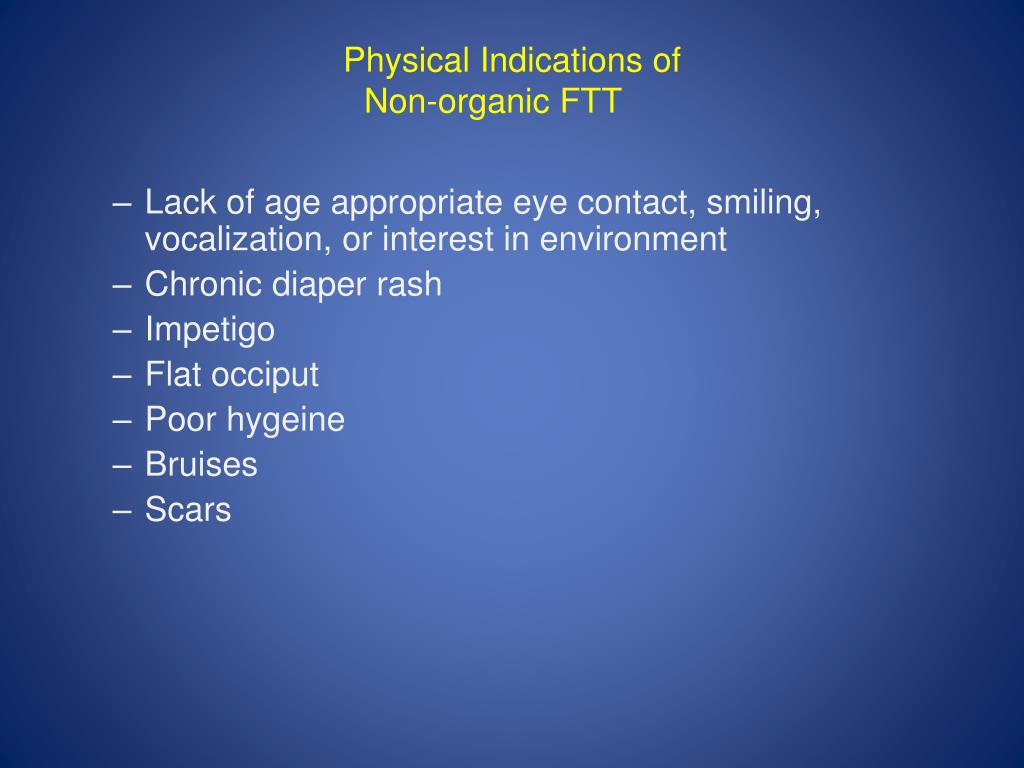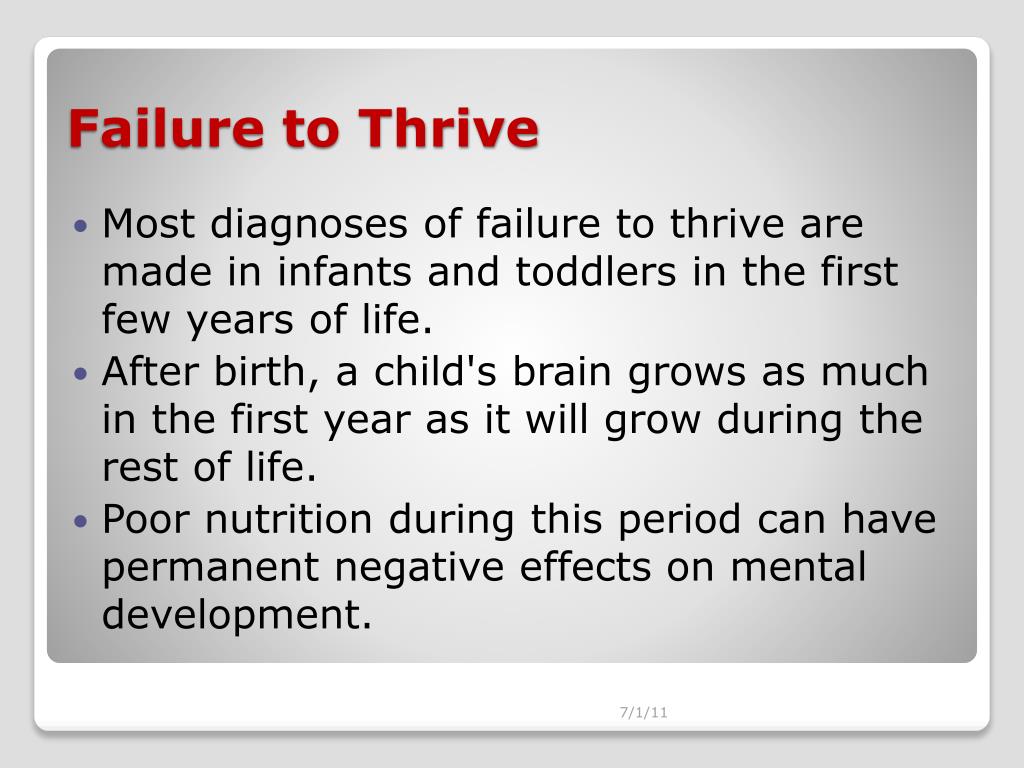

Recently it has been argued that clinicians should use the new charts which identify the slowest growing children while correcting for regression to the mean. A variety of cut-off points for action are used, including weight below a particular centile (which ranges from <10th to <0.4th centile) or crossing more than a certain number of centiles. Most child health surveillance programmes both in the West and in poor countries include the regular weighing of infants and young children, with the aim of identifying those children who are growing inappropriately slowly. In the light of these results the aggressive approach to identification and management of failure to thrive needs reassessing. It is unclear to what extent observed differences reflect causal relations or confounding due to other variables.

The height and weight differences are larger, but few children were below the 3rd centile at follow up. No studies corrected for parental height, but two reported that parents of index children were shorter.Ĭonclusions: The IQ difference (equivalent to ∼3 IQ points) is of questionable clinical significance.

Their pooled weighted mean difference for weight was −1.24 SDS (95% CI −2.00 to −0.48), and for height −0.87 SDS (95% CI −1.47 to −0.28). Two studies reported growth data as standard deviation scores. Four studies report IQ scores at follow up and the pooled standardised mean difference was −0.22 (95% CI −0.41 to −0.03). Data from population based studies with comparison groups and which reported comparable outcomes in an appropriate form were pooled in a random effects meta-analysis. Results: Thirteen studies met the inclusion criteria eight included a comparison group, of which five included children identified in community settings. Inclusion criteria: cohort studies or randomised controlled trials in children <2 years old with failure to thrive defined as weight <10th centile or lower centile and/or weight velocity <10th centile, with growth, development, or behaviour measured at 3 years of age or older. Medline, Psychinfo, Embase, Cinahl, Web of Science, Cochrane, and DARE databases were searched for potentially relevant studies. Methods: Systematic review of cohort studies. Aims: To ascertain the long term outcomes in children diagnosed as having failure to thrive (FTT).


 0 kommentar(er)
0 kommentar(er)
